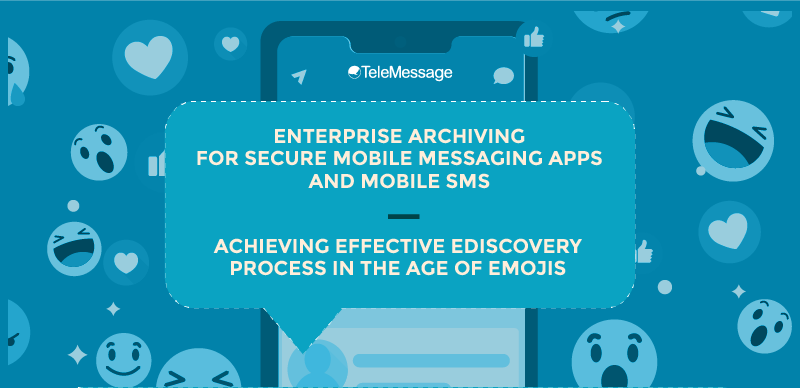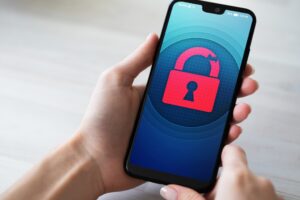Secure mobile messaging platforms such as WhatsApp, Telegram, and Signal are a common sight in today’s business environment. Aside from mobile SMS and voice calling, the widespread use of these secure mobile messaging applications has made it obligatory for regulated companies to invest in enterprise messaging solutions that can record mobile messages and capture WhatsApp and other mobile channels in a compliant manner.
Today’s challenge of archiving encrypted messages transmitted through these platforms to record mobile messages in a way that will satisfy the eDiscovery requirements of the Federal Rules of Civil Procedure (FRCP) is compounded further by increasing legal pressure and an increasing number of regulatory laws,.
Establishing and understanding the context of the archived mobile message such as SMS or WhatsApp chats are extremely crucial during litigation. Companies should be able to preserve the records of their business communications without altering their structure or omitting any characters – including emojis.
Using emojis in workplace mobile communication is now a norm, as an increasing number of companies are adopting BYOD policies and allowing their employees to use WhatsApp, among other mobile messaging apps. Still, such computer-generated characters are still required to be captured and recorded accurately for litigation purposes. It is according to FRCP Rule 34, which defines Electronically Stored Information (ESI) as “any information that is stored electronically.”

What Are Emojis?
Encyclopedia Britannica defines emoji as pictographs of faces, objects, and symbols. Invented in 1999 by Shigetaka Kurita, emojis can be transmitted across platforms and operating systems, thanks to Unicode, which makes it possible for iOS device users to receive a laughing emoji from someone who is using an Android device. As of March 2019, there were 3,019 emojis in the Unicode Standard.
According to an Adobe 2019 survey of 1,000 American workers, 76% of survey participants use emojis in their professional communications. Its widespread use in business communications is the reason as to why companies and legal authorities alike are keen not only to capture such types of electronic information – but also to interpret them.
Emojis in Court Cases
Santa Clara University law professor Eric Goldman has documented the appearance of emoji and emoticons in U.S. court opinions since 2004 and has tracked the rapid spike in their usage. Fifty-three cases contained emoji in 2018, compared with 33 in 2017 and 26 the year before, according to his research, which tracks court opinions in the Westlaw and Lexis legal databases that reference “emoji” or “emoticon.”
However, despite the increasing appearance of emojis in court cases, understanding them in a proper context is still a huge challenge for most court judges and lawyers. There are many factors as to why emojis can be a very tricky part of ESI during litigation:
- Cross-Platform Representation of Emojis
The difference in the mobile device’s maker and operating system can mean an emoji appears differently depending on the display device. A Mental Floss article provided some examples of emojis that look completely different on different phones such as Apple, Google, and Samsung:
- Face with Rolling Eyes
- Cookie
- Cat face
Emojis also tend to get a new variation as mobile devices receive software updates, often to respond to changing political climate and make them as inclusive to all cultures and ethnicities as possible. For instance, Apple changed its gun emoji to resemble a squirt gun in 2016 following a public outcry over gun violence.
The emoji of a boy is now also available in different skin tones to represent each race.
This cross-platform issue with emojis makes them problematic during litigation, as one party can insist that they received a completely different emoji than what the other party asserts they sent.
- Describing Specific Emojis
Thus, for emojis used in a business communication, a specific description can also be an issue during litigation as they can differ based on the manufacturer, operating system, and software version of the device. One way to address this problem is to use the emoji’s full name or its Unicode number, especially when they play a crucial role in establishing the context of the message.
- Interpretation
How a recipient interprets an emoji can emerge as the most difficult part of evidence discovery during litigation. This is especially true if the sender and recipient see two variations of the emojis they exchanged in a message, making complete archiving of mobile communications — from mobile SMS to WhatsApp chats — an important aspect of an effective eDiscovery process.
Companies using enterprise messaging solutions that can record mobile messages and capture voice calls from secure mobile messaging solutions such as WhatsApp and other platforms have a better chance of proving their case in court as they can establish the context of any business communications being considered relevant to the case.
With TeleMessage, companies can effectively record mobile messages, and capture voice calls from secure mobile messaging regardless of the device platform and operating system. TeleMessage Mobile Archiver is an enterprise messaging app that effectively addresses compliance, regulatory, and eDiscovery response requirements and which reduces risk across the financial, government, and healthcare sectors.





